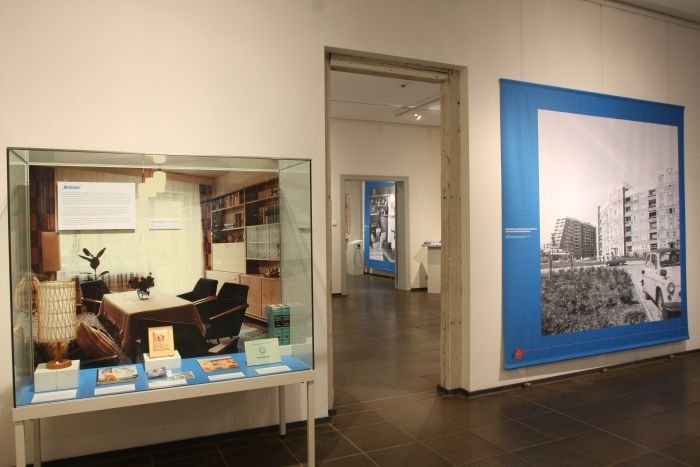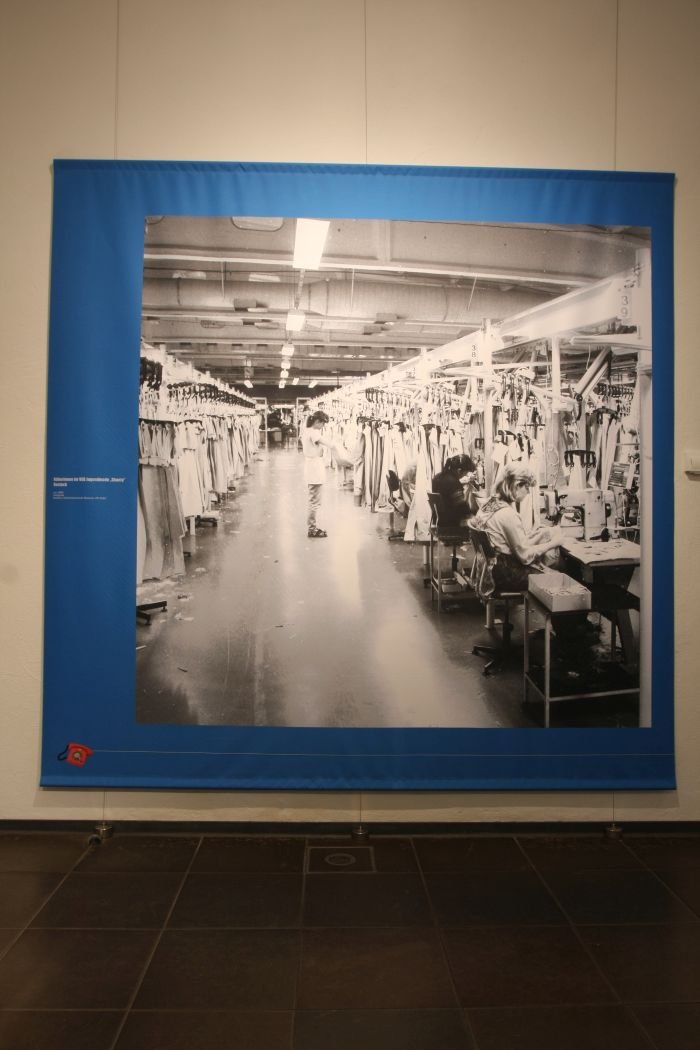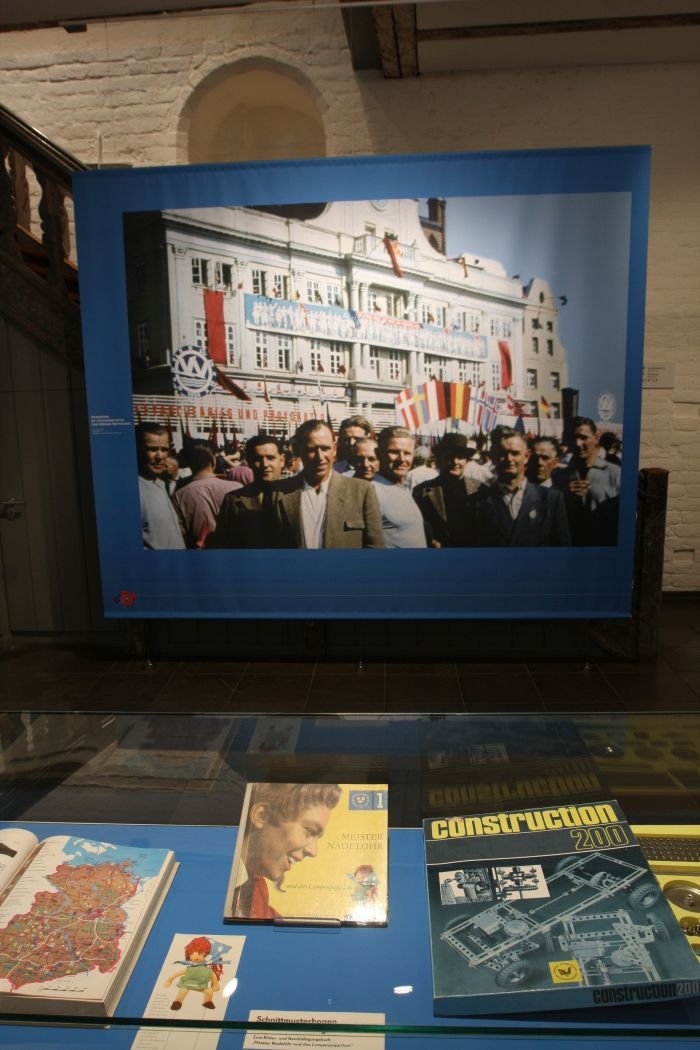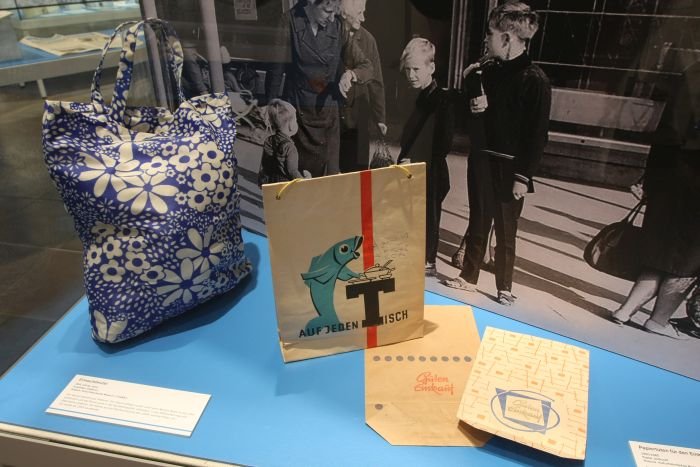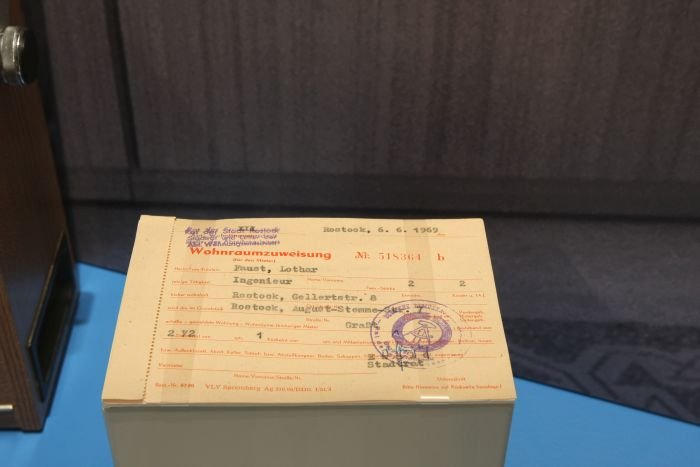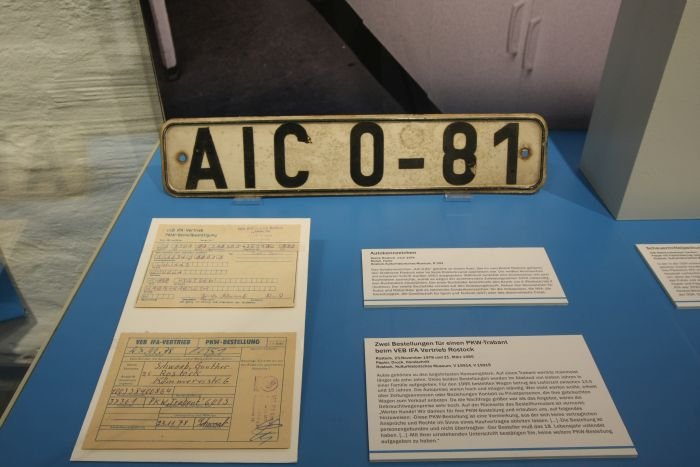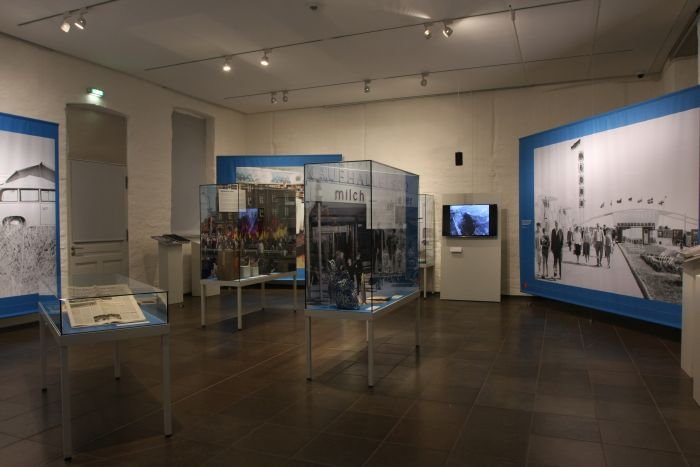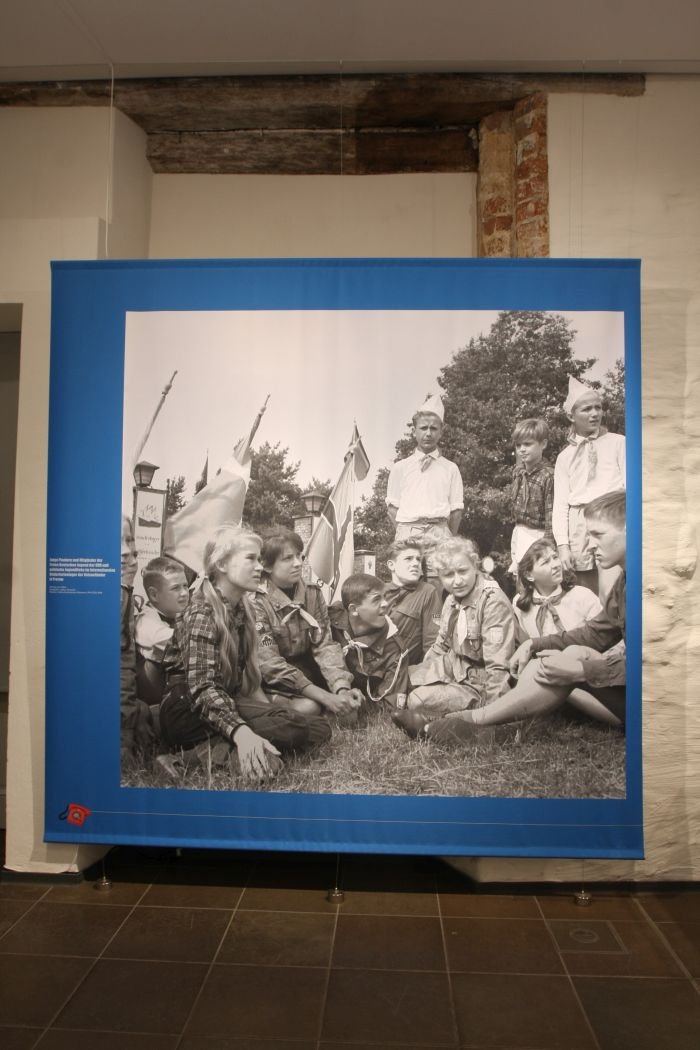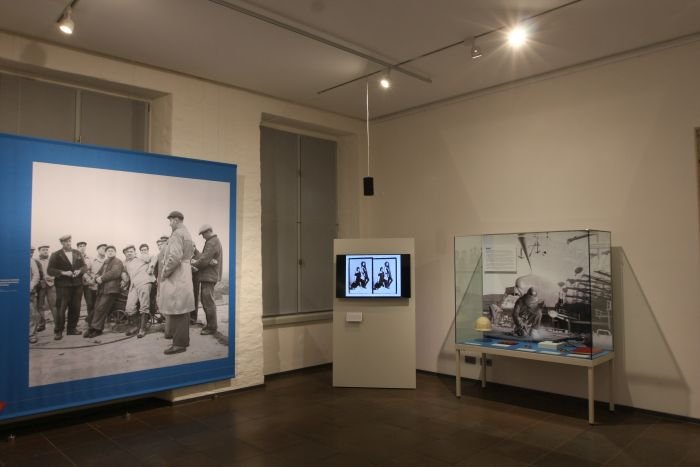Artefacts are generally considered remnants of societies and civilisations long past. Remnants which act as chroniclers, guides and reminders of societies and civilisations long past.
Artefacts however needn't be ancient. Nor the society they document.
With the exhibition Von Ata bis Zentralkomitee the Kulturhistorisches Museum Rostock explore daily life in the DDR through everyday objects, artefacts, and thereby the nature and reality of state influence and control on everyday life.
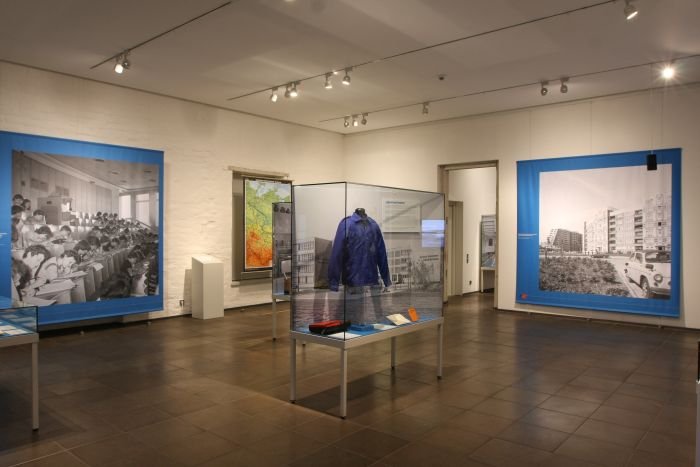
As with so many ideas, Von Ata bis Zentralkomitee [From Ata to Central Committee], began in that most creative of spaces, a conference coffee break, a conference coffee break in Potsdam to be precise, and where the Kulturhistorisches Museum Rostock's Director Dr. Steffen Stuth found himself on the banks of the Havel, between between the 1969 Interhotel and the 2016 reconstruction of the neoclassical Palast Barberini, "Potsdam is city that is greatly characterised by its DDR experiences, and sitting there I came upon the the idea of explaining the history of everyday life in the DDR", he explains, "three years ago we had an exhibition about DDR era high rise tower blocks in Rostock, Endlich eine Neubauwohnung, which was concerned with the realities of housing and DDR housing policy and here we have similar approach but with a focus on private, unremarkable, everyday objects, yet objects which can explain different aspects of DDR society"
The result is an exhibition which not only presents a lexicon of everyday DDR objects, from the scouring agent Ata to the all powerful ruling SED Zentralkomitee, but which also explores how the Zentralkomitee attempted to become just as normal and integral a part of everyday life as Ata. How, if you will, SED dogma and ideology attempted to become a scouring agent. Only a lot less helpful. If just as abrasive.
A state of affairs which hopefully makes clear from the beginning that despite being a presentation of everyday DDR objects and products, Von Ata bis Zentralkomitee is no (n)ostalgia exhibition: had it been we wouldn't have written about it, there being little we detest and deplore more than those who explain the DDR dictatorship as a Marxist-Leninist theme park. At the same time Von Ata bis Zentralkomitee isn't an anti-DDR exhibition, there's no bitterness, no vitriolic, much more it takes a critical look at the structures and organisation of DDR society as expressed through otherwise unobtrusive everyday objects. Unobtrusive everyday objects that under normal conditions the state, largely, wouldn't have had any, or only marginal, interest in.
Like Ata.
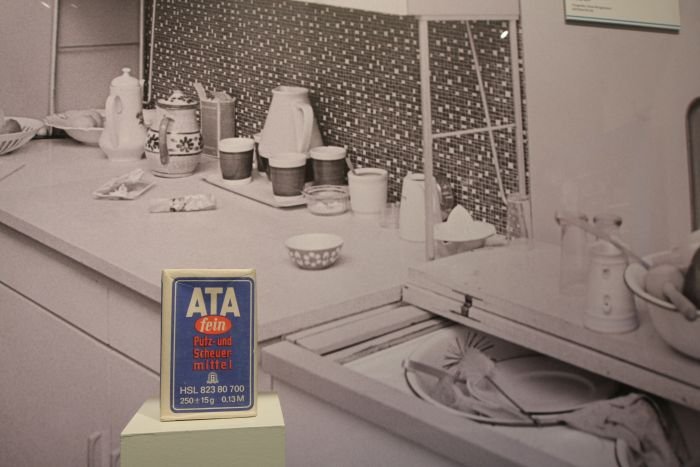
In addition to being a non-linear lexicon, Von Ata bis Zentralkomitee also follows a helical narrative; begins with the childhood of the individual DDR citizen and twists cleverly, and imperceptibly, to end with the death of the socialist state, thereby exploring two lives in one, and via a range of themes including, and amongst many others, Childhood and School, Work, Shopping and Travel, each subject being presented via a handful of objects which explain differing aspects, including, though not exclusively, the nature of the state's influence and attempted influence. An influence which although always changing to remain relevant to the age and position of the respective citizen, always contains some key, core elements. Having viewed the exhibition we, for example, are unsure as to exactly how many medals the conscientious East German could have collected throughout the course of an exemplary citizenship. But it would have been a lot.
As an exhibition Von Ata bis Zentralkomitee has a clear, unapologetic, Rostock bias. On the one hand because the realities of DDR production systems meant there were often regional differences in products and, logically, the Kulturhistorisches Museum Rostock's collection focus is Rostock, and so they posses those objects produced and consumed in Rostock and environs. But also as Dr. Stuth explains "Rostock was an important regional city in the DDR, was in many regards a model city in the DDR, and thereby in context of a city such as Rostock one can explain the everyday story of the DDR particularly well." Not least because the Rostock focus allows for a focus on Rostock specific contexts such as the various maritime industries, the popular tourist region along the Baltic Sea coast or VEB Shanty Jugendmode, one of the leading producers of jeans in the DDR and a clothing company who's story neatly exemplifies the curiosities, when not whole scale, state sponsored, absurdity of industrial production in the DDR. As does the kitchen whisk produced by the Rostock diesel engine factory. Obviously. What else should a diesel engine factory produce? The focus on Rostock however in no way detracts from the overall validity of the exhibition and, for example, the construction of housing estates in Leipzig, Chemnitz or Eisenhüttenstadt would have proceeded as in Rostock.
And regardless where you were there would, presumably, have been just as many medals to have been won along the way.
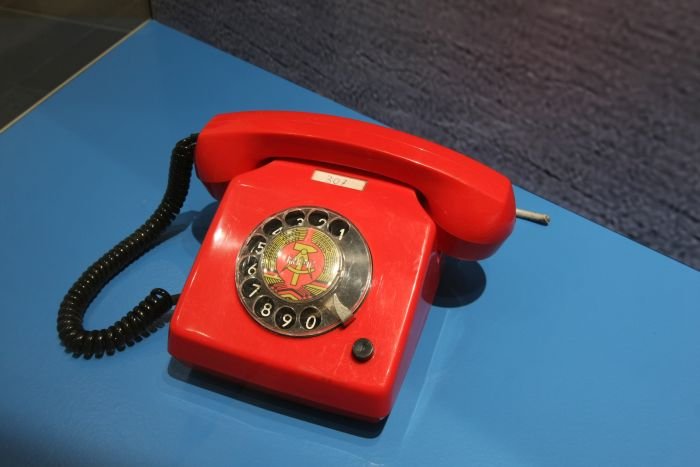
Particularly pleasing is the, when not humorous, then certainly lightness of touch with which many of the exhibition texts have been composed, a lightness which greatly aids the accessibility without detracting from the seriousness. And so for example we learn that "The favourite free-time activity was watching West German television" or that in context of the biannual public processions on May 1st and October 7th, "Those who could avoided carrying a banner, in order to be able to vanish immediately after the attendance check", while when the local Ostsee-Zeitung is introduced with the words "Reading newspapers in the DDR was a prosaic activity", it neatly sets up what follows without being biased or trivialising.
And also confirms that Von Ata bis Zentralkomitee has the necessary distance to its subject.
As an exhibition it could be discussing everyday life in ancient Greece or in Hanseatic Rostock; it could just as easily state that "Reading newspapers in ancient Greece was a prosaic activity" or "Reading newspapers in 15th century Rostock was a prosaic activity", but they wrote DDR, thus confirming that the DDR and its everyday life is treated just like any other historical epoch. Albeit one that in many regards is still present; something we regularly experience in our dealings with those eastern German public and civil servants who learned their trade before 1990, and which the exhibition presents in the figure of Sandmann, that eternal traveller without whom no DDR, or contemporary eastern German, child, can or could even consider going to sleep.
And this distance to something that is still in living memory, still in many cases relevant on a everyday basis, is what bequeaths Von Ata bis Zentralkomitee its credibility and allows it to entertain and inform in equal measure.
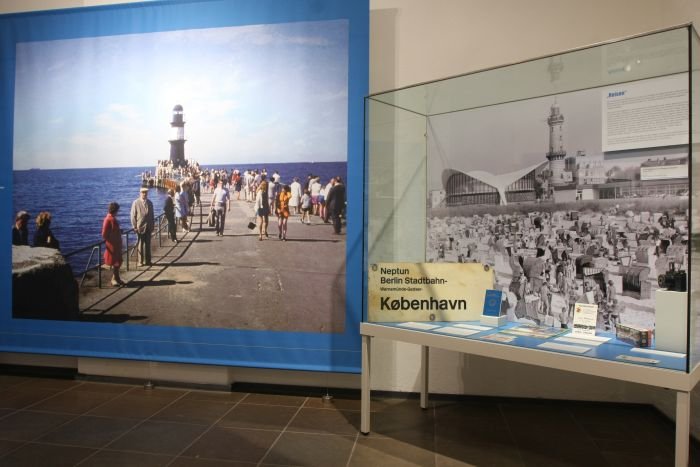
It´s over twenty five years since the line was cut to the Stasi telephone that represents both the end of the DDR and of the exhibition. Twenty five years in which, and despite the fact the imperialist BRD still insists on referring to the former DDR as the Neue Bundesländer - New States - and thus confirming their irrevocable subservient status, much has changed.
Including memories of the DDR.
Museums exist not only to collect the past, but to make that past visible, tangible, and relevant, to keep memories visible, tangible and relevant, something Von Ata bis Zentralkomitee does very well, not least because the use of everyday objects makes the subject universally comprehensible; whereas stories of individual experiences create an understanding framed by those individual experiences, here that understanding arises from the communality of the experience. And thus its totality. Like the state control.
That today our public and private lives are closely, and increasingly, intertwined, is largely through either our active permission or passive indifference. In the DDR you didn't have even the freedom of indifference. "One must remember that the East German citizen couldn't withdraw from the influence of the state", explains Dr. Stuth, "the states influence was everywhere, and that from the very earliest years, in children's TV, in the almost 100% membership in the Pioneer organisation in schools, in the Pioneer songs, from Kindergarten onwards one was nurtured towards the ideal image of the socialist citizen, and thus the state doctrine permeated into the private sphere"
Objects such as the children's lexicon "Von Anton bis Zylinder", the central housing allocation system as opposed to the freedom to choose where you lived, and the various medals and awards explain that very well.
While yet other objects explain how DDR citizens sought to remove themselves, and least temporarily, from this control, objects such as books as an alternative to the ubiquitous collective, the watering can as a symbol for the garden, or the Sonett KT 300 cassette recorder via which "west" music could be heard and thus a little illicit freedom from the state enjoyed.
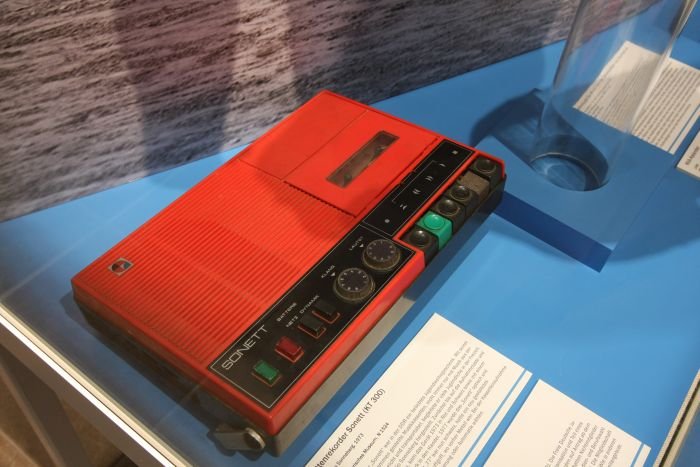
As an exhibition Von Ata bis Zentralkomitee isn't an exhibition about the DDR, nor is it an exhibition about those objects on display, it is an exhibition about everyday life in the DDR as explored through those objects on display, and by extrapolation about our relationship to everyday objects, to everyday life, then and now, in the DDR and everywhere else.
A well laid out, presented and staged exhibition which makes good, judicious use of film and large format photos, Von Ata bis Zentralkomitee is a spacious exhibition, giving you the room and time to work your way through both it and the subject(s) at hand.
At around 70 objects it is a, relatively, small exhibition, but not one that need be much larger, that works very well at the size it is, reaming both interesting and informative, but never too theoretical and certainly not preachy. Or (n)ostalgic.
The overwhelming majority of East Germans were well aware of the influences the state had, and wanted to take, and blended most of it out, accepted it as "one of those things" and got on with their lives. And arguably a majority of East German's had, largely, happy lives and still hold many fond memories for much of the DDR, including for the types of objects displayed in Von Ata bis Zentralkomitee.
A state of affairs that can all too easily lead to a trivialising of the reality of the DDR, particularly amongst those who never experienced it, can't understand the reality, the continual balancing act that had to be undertaken between personal freedom and the subjugation necessary to simply get on in life. Arguably however also amongst some of those who did experience it, but who were never particularly harshly affected, and who thus, with the passage of time, may find their memories abstracting towards the good times.
Von Ata bis Zentralkomitee makes the daily balancing act tangible, and therefore not only keeps it sharply in focus, without the blurring of time, but underscores the contemporary relevance of both understanding and correctly responding to the control and influence placed on us by governments. Or Californian tech conglomerates.
And does so with nothing more complicated than unobtrusive everyday objects with which all are familiar. Artefacts.
Von Ata bis Zentralkomitee runs at the Kulturhistorisches Museum Rostock, Klosterhof 7, 18055 Rostock until Sunday March 4th.
Full details, including information on the accompanying fringe programme can be found at www.kulturhistorisches-museum-rostock.de
